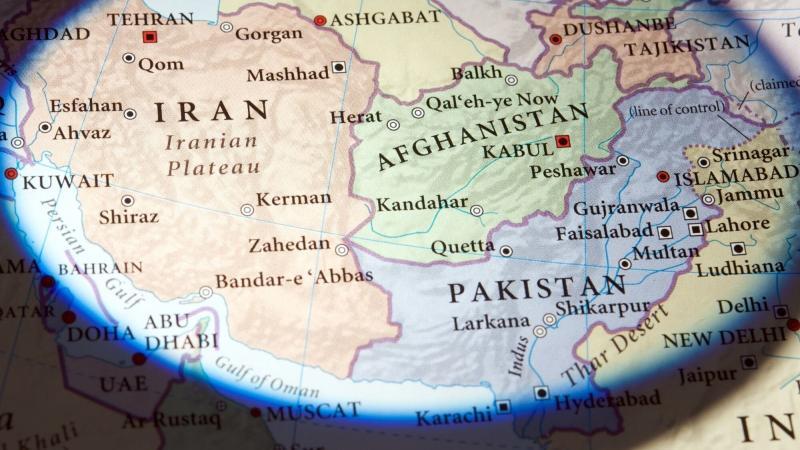Abstract: As the pundits and analysts were busy accounting for a stunningly swift Taliban takeover of Afghanistan on August 16, Taliban allies and sympathisers in Islamabad, Beijing and Moscow had just started celebrating. Then, the Kabul bombing, ostensibly carried out by an ISIS branch – ISIS-K – introduced an entirely new set of calculus to figure out for every global and regional player.
Bottom-line-up-front: The political and economic supporters’ investment in the Taliban was hinged on the promise that the Taliban’s rule would bring enough stability to the Afghan heartland and its border points with China, Pakistan, and Iran to bring in Chinese investment. However, this strategy is not new and has failed many times during the last 40 years.
Problem statement: How did the fall of Kabul and the August 26 suicide bombing influence the dynamics of Afghanistan’s relations with Pakistan, China and Russia?
So what?: The emerging situation in Afghanistan and bordering areas could alter the precariously poised balance of power in South, West and East Asia. It can re-draw China and Russia’s areas of influence in the region, and produce a catastrophic human rights and refugee crisis. The US and its allies must act now to contain the emerging China-Russia-Iran nexus to thwart these ambitions and to keep the Indian ocean and West/Central Asia safe for trade.

Source: www.shutterstock.com/Marlin360
The August 26 suicide bombing at Kabul airport, the announcement of HQN-led hardline/terrorist Taliban dispensation, the reports of Taliban factional fighting and reports that Taliban 2.0 is much the same as Taliban 1.0, calls for a swift strategic rethink by the US, Europe and concerned allies and partners in the region. Let’s examine where the equation was after Taliban militia changed it on August 16 with the fall of Kabul and how it swiftly changed for major stakeholders in the region – Pakistan, China and Russia.
First up Pakistan, the immediate neighbour that shares more than 1,500km of its almost entire western border with Afghanistan, invested its almost entire geopolitical clout and capital on harbouring, funding, training and reinforcing Taliban for the last 26 years of the militia’s existence.[1] Up until August 16, the sounds coming out of Pakistan were of joy and celebration, with Prime Minister Khan publicly saying that the Taliban finally broke the shackles of slavery of the West. Understandably, it was indeed a kind of swift coup plotted and staged by its intelligence agencies led by ISI. Prodded by China, the idea this time round was not merely to keep Kabul in Islamabad’s orbit but to deliver the strategically located region for China Pak Economic Corridor (CPEC) and beyond for Beijing’s Belt and Road Initiative (BRI). The bet and investment on the Taliban was hinged on the promise that the ISI militia’s (Taliban) brutal and centralised rule would bring enough stability in Afghan heartland and its border points with China, Pakistan, and Iran to bring in Chinese investment.[2] The strategy envisaged two key objectives, namely a) keeping India and the US out of this vital access route to Gulf and Central Asia and turn it into a zone of Pakistani and Chinese trade and investment route; and b) to keep Pakistani border areas of Afghanistan and restive Balochistan clear from any possible Indian interference in these areas.
Up until August 16, the sounds coming out of Pakistan were of joy and celebration, with Prime Minister Khan publicly saying that the Taliban finally broke the shackles of slavery of the West.
Pakistan’s Skin in the Game
However, Pakistanis’ problem is that the strategy is not new and has been tried and failed many times during the last 40 years. Even if the Taliban ruled unchallenged in Kabul, the extremism that it would infuse in already receptive and radicalised Pakistani society would have been enough to set the country aflame as has been witnessed in the past. The Taliban’s allied group TTP or Pakistani Taliban wreaked havoc in the country, with thousands killed in suicide bombings targeted civilians, minorities, and armed forces. Nevertheless, Pakistan’s military’s support to the Taliban is unwavering, and they placed the same bet on the same horse despite losing many times before.
The Taliban’s allied group TTP or Pakistani Taliban wreaked havoc in the country, with thousands killed in suicide bombings targeted civilians, minorities, and armed forces.
This time around, the bet had even lower probability of succeeding because of two new dynamics that crept up lately: a) there is a strong nationalist unrest/insurgency against the Pakistani military in the bordering regions of Pakistan and Afghanistan. That unrest is politically motivated against Pakistan’s military’s support to Taliban; b) though the Taliban is largely Pakistan’s creation and proxy, in the past, they, especially their field commanders, attacked Pakistani forces and are closely allied with Al Qaeda and Pakistani Taliban TTP – the avowed enemies of Pakistan’s military; and c) on top of it all, there are severe and deep internal divisions inside Pakistan’s military on a variety of questions like Pakistan’s alliance with China and military’s role in Afghanistan.
ISIS-K, Civil War and Implications for Pakistan
Come August 26, the Kabul bombing and the whole scenario with all its promises of stability turned on its head with the introduction of a new and deadlier player to the conflict – ISIS-K. ISIS and Taliban are sworn enemies and had fought many bloody turf battles in Afghanistan lately. ISIS is a vehement opponent of Pakistani ISI and security forces, considering them a stooge of the US. It has carried out several attacks in the past inside Pakistan on multiple civilian and security targets. It has strong extremist, militant alliances inside Pakistan and Punjab with Lashkar-e-Taiba (LET) and Jaish-e-Muhammad (JEM). Both organisations were ISI proxies for Indian Jihad, but they are closely linked to AQ and ISIS.
In the likely imminent possibility of a full-fledged civil war between ISIS and the Taliban in Afghanistan, the Taliban would come under severe pressure to govern and control the country. Their fallback on their Pakistani sponsors could bring ISIS suicide and other operatives inside Pakistan where they would find a welcome home with LeT and JeM. Their target would be to strike at the core strength of Pakistan’s military whom they see as the main strength of the Taliban. If this scenario plays out, Pakistan that is already riven by serious economic meltdown, intra-military divisions, and rising waves of nationalist movements could be the next one to fall along with the Taliban’s Afghanistan. This is one of the serious possibilities that the world should prepare for, especially when Pakistan is a nuclear-armed state with approximately 150-200 nuclear warheads.
If this scenario plays out, Pakistan that is already riven by serious economic meltdown, intra-military divisions, and rising waves of nationalist movements could be the next one to fall along with the Taliban’s Afghanistan.
Because even if the Taliban manage to fend off ISIS for some time, it would need open and all-out Pakistani military support which could overstretch the military and drain its budget quickly, making it more difficult to control ISIS and allies inside Pakistan.
The Implications for China and Russia
For China, all bets are on the stability of the Taliban regime, and for that to happen, it would bank on Pakistan and ISI’s good offices and strength. If that strength falls short, China’s dreams of Persian Gulf access and Central Asian route to Russia could die quickly in the wasteland of Afghanistan. It is doubtful that China would undertake any security commitment inside or outside Afghanistan on its own. It is too expensive and , especially when it has its plate full in the South China Sea and Taiwan Strait. It would try and underwrite cheques to achieve those goals, but if the costs rise quickly, it would definitely force a rethink.
It is doubtful that China would undertake any security commitment inside or outside Afghanistan on its own.
For Russia, the nature of Taliban victory is more of a propaganda coup than bringing any meaningful deal to the table. If the Taliban could keep a stable central Asian border, it might open up a small window of opportunity for Russia to retrieve that lost influence in “The Stan’s”, but with Masood’s Panjshiris controlling that border, even that window is far from opening. After the August 26 bombings, like everyone else, Russia would be compelled to wait for the outcome of the Taliban-ISIS duel and then make the next move instead of going back in without any clear objective.
Mohammed Rizwan is a freelance writer and researcher based in Toronto. He is a former journalist and fellow at The Pragmora Institute. The views contained in this article are the author’s alone.
[1] James Landale, “Afghanistan: What rise of Taliban means for Pakistan,” BBC News, September 03, 2021, https://www.bbc.com/news/world-asia-58443839.
[2] Muhammad Tayyab Safdar and Max C. Barte, “Can CPEC Move Beyond Infrastructure?,” The Diplomat, September 10, 2021, https://thediplomat.com/2021/09/can-cpec-move-beyond-infrastructure/.






